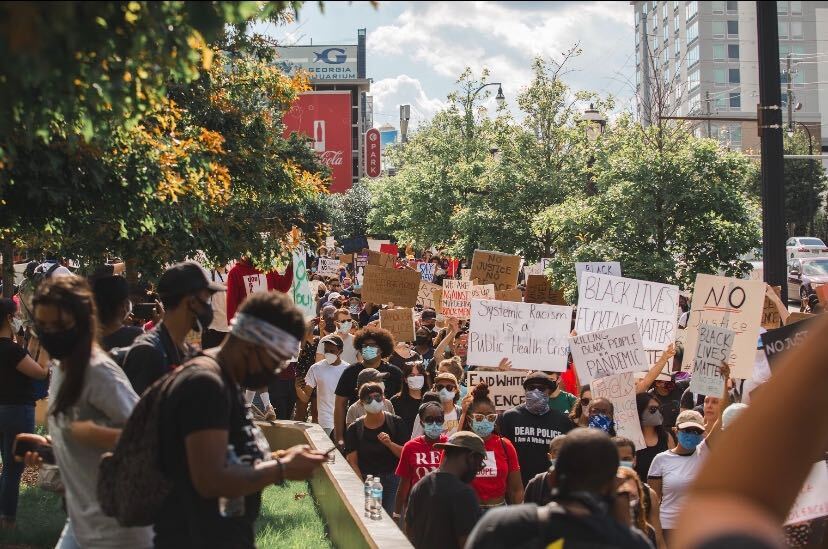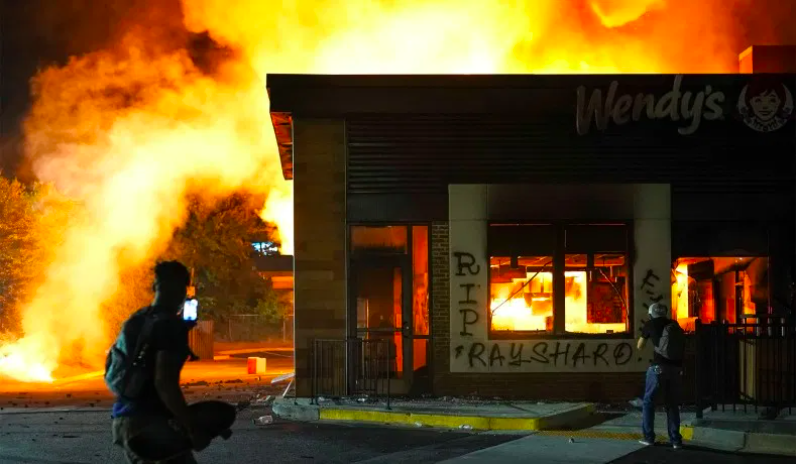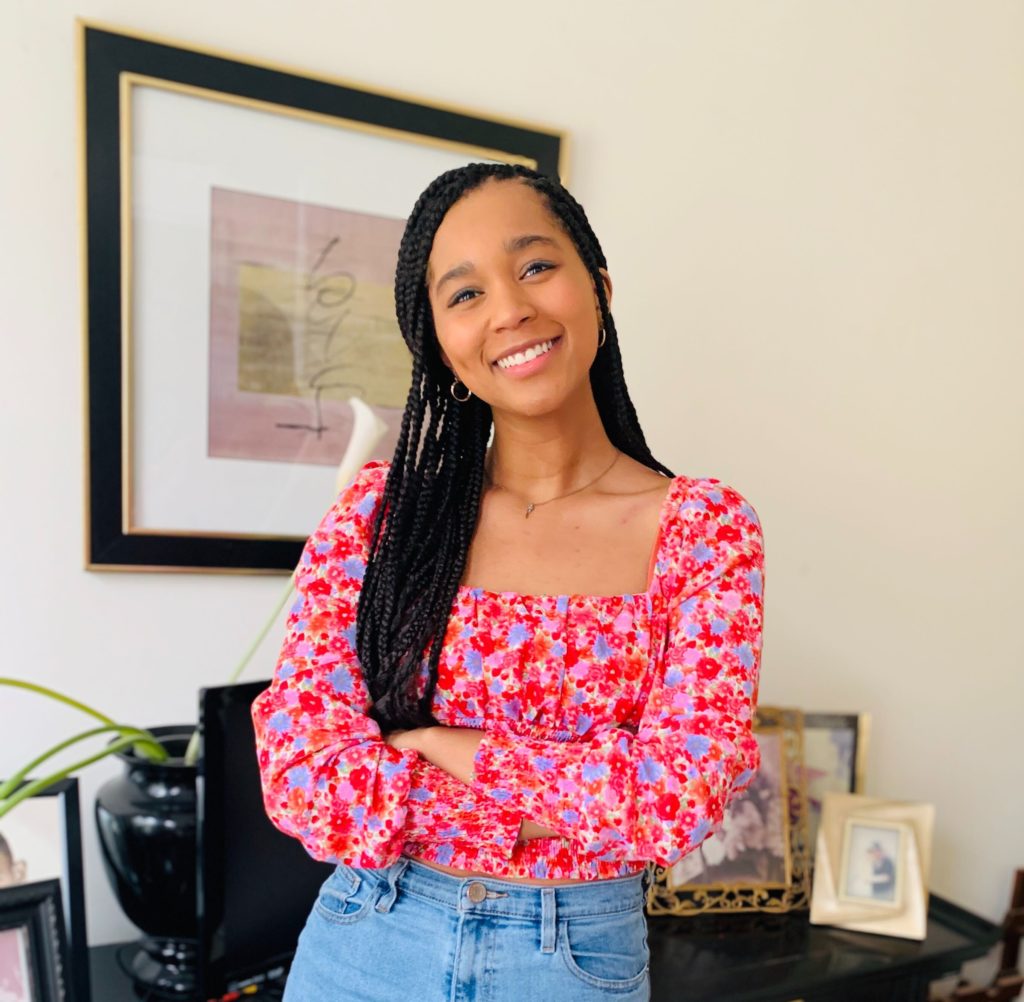Posted on 26 June 2020.

The recent killings of George Floyd, Breonna Taylor, Ahmaud Arbery and Rayshard Brooks have been a crude reminder of the systemic issues continually oppressing Black Americans: institutional racism, police brutality and white ignorance. Black lives matter, and it is downright unacceptable that Black Americans still have to fight oppression and for the right to live in the year 2020.
Talking about entertainment and popular culture seems so trivial at a time like this, but Black Americans have always contributed greatly to American society. From Booker T. Washington and W.E.B. DuBois to James Baldwin and Maya Angelou, they have been at the forefront of intellectual culture. Nearly every genre of music originated in the African American community — blues, rock-and-roll, R&B, jazz and hip-hop. And acclaimed Hollywood figures like Spike Lee and Denzel Washington have paved the way for a new generation of talent in cinema.
In recognition of how essential Black lives have been to popular culture, the Technique staff highlighted some of their favorite artists for a multi-part segment celebrating them.
Stevie Wonder
Journey Sherman, Opinions Editor
Stevie Wonder is known as one of the most influential musicians and songwriters of all time. After losing his sight as a child, he quickly mastered instruments like the piano and harmonica. His soulful and polished sound led him to sign with Motown records at just 11-years-old. Two years later, Wonder would become the youngest artist to ever top the Billboard charts with his single “Fingertips.” He would later again skyrocket to success with hits like “Superstition,” “Higher Ground” and “Signed, Sealed Delivered I’m Yours.” His most essential album “Songs in the Key of Life” was released in 1976 and is a cover-to-cover masterpiece. Stevie Wonder is seen as a musical pioneer that paved the way for many other R&B, soul and funk artists.
Roxane Gay
Taylor Gray, Editor-in-Chief
Roxane Gay, a regular contributing opinion writer for the New York Times, is most notably known for authoring “Bad Feminist,” “An Untamed State” and “Hunger,” along with many other literary expeditions. As an openly bisexual Black woman, Gay explores themes of gender, weight, sexuality, feminism and racial issues.
One of her most impactful works, “Hunger: A Memoir of (My) Body” is probably one of the best modern novels that clearly explains the feelings and emotions around living big in a world that does not know what to do with fat bodies. Gay, who gained weight after experiencing trauma, utilizes her own vulnerability throughout the memoir to accurately depict how fat people are consistently mistreated and disrespected in the different realms of society.
“Hunger” serves as an important representation within the fat community, and specifically for those who have gained significant weight while living with binge eating disorder. Gay’s journey through her relationship to food and her own weight is one that is often not told. And through the novel, she clearly explains how fat bodies, and especially Black fat bodies, deserve to be treated with dignity.
JID
Sophia Tone, News Editor
Destin Choice Route, better known as JID or J.I.D, is relatively new to the scene but has already been described as a leader of the “new school” of rap. JID was raised in East Atlanta and is the youngest of seven siblings, all of whom he looked to for musical inspiration growing up. He has said that his style is heavily influenced by the eclectic tastes of both his family and Atlanta itself. In 2010, he collaborated with EarthGang to found Spillage Village, a collective ensemble of Southern rappers. In 2012, after being kicked off Hampton University’s football team, he dropped out of college to pursue music full-time.
JID is a fresh face in the music business but has been praised by everyone from Method Man to J. Cole, who signed him to his Dreamville label in 2017. His lyrics are incredibly rich, deeply meaningful and a refreshing sound in a musical domain saturated with clout-chasing mumble rap. Songs that best exhibit this lyrical mastery are “M.O.M.,” “BEARS LIKE THIS TOO MUCH,” “151 RUM” and “DICAPRIO 2.”
Tyler Perry
Jannat Batra, Managing Editor
Born in 1969, Emmitt Perry Jr. never thought he would live long enough to see adulthood, let alone be named entertainment’s top earner by Forbes in 2011. Emmitt Perry, who later changed his name to Tyler Perry, did not have an easy childhood. He faced constant abuse at the hands of his father, but he turned to TV and film to find solace and was drawn to writing for its therapeutic effects. What began as him simply writing letters to himself evolved into the musical “I Know I’ve Been Changed” in 1998, and since then Perry’s career as an actor, writer, producer, comedian and director has climbed the ladders of success tenfold.
Perry is popularly known for his portrayal of the caricature Mabel “Madea” Simmons in many of his films and plays, inspired by Perry’s mother and aunt. Madea is an elderly Black woman best known for her no-nonsense attitude, intimidating demeanor and comically-violent overreactions. But at her core, she is a matriarch who cares deeply for the people around her and is not afraid to call out those in the wrong, working to resolve the central conflicts in all of Perry’s plots. More than his role as Madea, Perry’s success revolves around his effort to highlight Black talent while portraying Black stories. However, Perry has also faced criticism for stereotyping Black communities in America through his works and especially the portrayal of Black women. Nonetheless, Perry’s overall success is undeniable, allowing his independent, Atlanta-based Tyler Perry Studios to thrive outside of Hollywood.
Scary Spice
Uchenna Godwin-Offor, Contributing Writer
Melanie Janine Brown, better known by her stage name Scary Spice, is an English songwriter, singer, actor and author who was part of the best-selling female group of all time, the “Spice Girls.” A jack of all trades, she has dabbled a bit in almost every entertainment medium you could think of: movies, animations, plays, music, concerts, books and even reality television. Mel B is a spicy flavor in someone’s day. Having a “zig-ah-zig-ah” with her friends and eventually shining in the limelight of her own “Hot” album that lived up to its namesake, Scary Spice paved the way for many female pop singers, especially singers of color. Being the only Black member of the Spice Girls did lead her to stand out in the team but in a way that let people know that anyone can move and groove to a spicy tune, regardless of background, upbringing or appearance.
Mel B is special because she felt like a familiar face whenever people watched television. Starring in the movie “Spice World” as herself, people were given a comedy where the spirit of the Spice Girls was portrayed to them in an entertaining form. Also, Mel B was a longtime judge on the American reality television show “America’s Got Talent.” Scary Spice was on the show for six years interacting with contestants and having a great time. She played a huge hand in giving the show life with her energizing Leeds accent and her flamboyant style of dressing. The British pop icon has inspired many around the world to express themselves and find many ways to spice up their lives.
Frank Ocean
Zyra Shahbazi, Contributing Writer
“Dreaming a thought that could dream about a thought/ that could think of the dreamer that thought/ that could think of dreaming and getting a glimmer of God.”
The dreamer in these visceral lyrics from “Seigfried” was born Christopher Edwin Cooksey but is now known as Frank Ocean. A hip-hop vocalist influenced by Celine Dion and Anita Baker, Ocean was declared the artist of the 2010s decade by several publications, including the Wall Street Journal. This is with good reason: Frank Ocean is an inspiration to Black and queer people everywhere, and his R&B-jazz-soul style is truly one of a kind.
He dreamed bigger than most, but Ocean was not without challenges in his pursuit to become hip hop royalty. He worked no less than 11 fast-food jobs during his early career in Los Angeles. Within a few years, however, he was writing songs for huge artists such as John Legend and Justin Bieber. His 2011 mixtape “Nostalgia, Ultra” received much critical acclaim, and he was rising to the top without delay. In a courageous move, Ocean came out as queer on his Tumblr blog in 2012. He received a great deal of backlash from homophobes online, along with the admiration of the LGBTQ+ community and its Black members. By living boldly and freely, Ocean has transcended the title of artist. He is an American ideal. Frank Ocean has shown those living in Black and queer skin they are capable of achieving their dreams.













